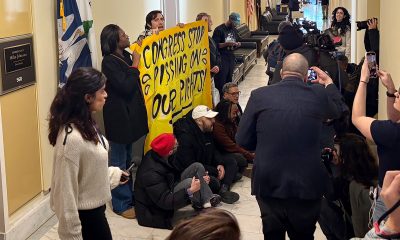Real Estate
Strong D.C. housing market has wide-ranging factors
City officials want to continue attracting newcomers while not pricing long-term Washingtonians out
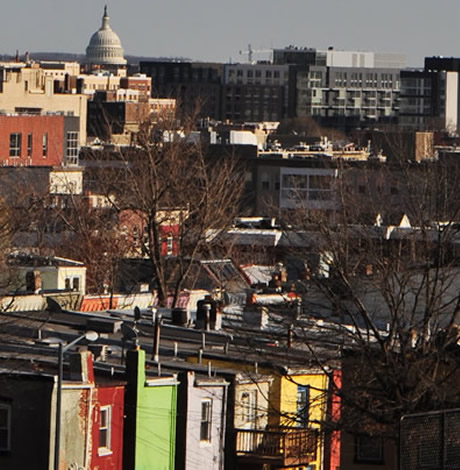
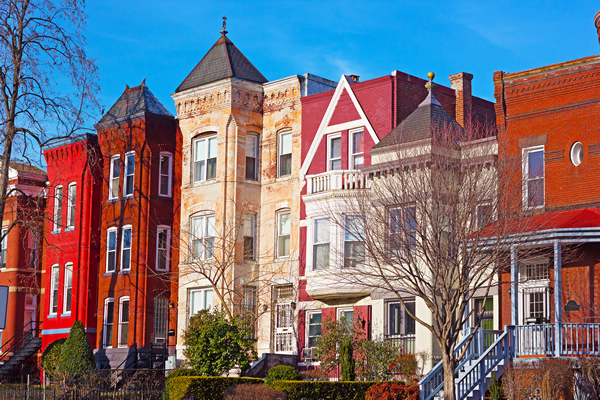
Local Realtors say buyers are pricing their properties more strategically than they were a decade ago based on current buying trends.
Ed Wood is a D.C.-based realtor with City Houses LLC for 20 years and former president of the District of Columbia Association of Relators. He sells in all eight wards and averages 15-20 sales per year.
He spoke with the Washington Blade this week on local housing trends, renting vs. buying and why the rental market is soft now, but likely to explode in the coming years. His comments have been slightly edited for length.
WASHINGTON BLADE: It seems most agree in Washington we’re back to pre-recession prices and multiple offers on real estate. Is that your assessment?
ED WOOD: Yes. D.C. was in a much better position during and after the recession. We saw a flattening but then it picked up fairly quickly and the market has been really strong ever since about 2011, 2012. We regularly see multiple offers still on properties.
BLADE: Is the asking price sort of an opening bid in those situations?
WOOD: It depends where it’s priced. It’s they’ve priced a little below asking, they’ll often get multiple offers and it will bump up. If they’re priced at asking or above, we do see things sit on the market because of that. Buyers are more savvy and more cautious than they were pre-2008.
BLADE: Were there many cases in D.C. where a homeowner may have been underwater on their mortgage during the recession but got out of it once the economy rebounded?
WOOD: There wasn’t a lot of that in D.C. It was more in the suburbs and more likely the further you got out from the city but those prices we saw coming back by last year. Occasionally in some of the more developing neighborhoods we saw some slow downs and some price softening but those prices have completely come back. Many values have increased above what people paid.
BLADE: How is the market for rentals vs. sales in Washington?
WOOD: The rental market has been fairly soft for awhile while the buying market has been strong. A lot of the buildings that are going up in the city have been rental buildings as opposed to condos and that’s because the long-term demographic outlook for the city — we’re still gaining about a thousand residents a month — is expected to be over a million by 2030 so there are a lot of companies from around the country who see this as a really good rental market and they’re interested in the long term. We’re not seeing the number of condos we saw pre-2008, so that’s why we see the competition. There’s still not enough inventory.
BLADE: Why is the rental market soft if the projections are so strong?
WOOD: They’re building for that projected million residents. (Editor’s note: D.C.’s current population is about 672,000.) You can’t suddenly build all the units you’ll need, so they’re building them now for five-10 years down the road. These are big companies who work in the long-term market so they can afford to do this. Sometimes they’ll even go to developers building a condo building and say, “Hey, we need a rental building at this location. Would you consider reconfiguring the design a bit to turn it into a rental building and selling the whole thing to us?” That’s attractive to developers because it’s a lot easier to sell an entire building than individual units to individual buyers.
BLADE: Those population projections must be pretty solid then. Could something catastrophic throw a wrench in those plans?
WOOD: Certainly. After 9-11 around the country, it just killed the market immediately and people stopped moving to D.C. immediately. But then things turned around. A lot of things could happen to change things, but hopefully nothing of that scale. All the demographics I have looked at are pointing toward that large population growth at least through 2030. Others that go beyond that are less reliable in my opinion.
BLADE: Based on what we’re seeing now and with those kinds of projections, will gentrification spread across the river? What’s it like in those wards now?
WOOD: There’s a lot of interest in Anacostia and there’s a lot of change going on there. Bigger companies are looking at that area. … One of the issues there has been a lack of services and also people who’ve been priced out of other areas are looking over there. There’s been a lot of revitalization there but there’s also been a very active group of long-term residents who want to see improvements but don’t want to be pushed out. I know the mayor and city council members are focusing more on that part of the city. There’s even talk of moving the Reeves building at 14th and U., of selling that building and moving it over there.
BLADE: With all the gentrification that has spread down 14th Street to Florida Avenue and starting into the Northeast quadrant — look how different Bloomingdale, for instance, looks from what it was like 10 years ago — is it safe to assume that trend will continue or is that an oversimplification?
WOOD: I think that’s true. City government for a long time was desperate to get people to move back into the city. It was a dying place as people were overall fleeing out to the suburbs but that’s turned around and most cities are growing whereas the suburbs are starting to die out. People want to be closer and they want to spend more time doing the things they like as opposed to sitting in their car going to and from a bigger house. The city government is taking a renewed look at how that happens, how that takes place and what it means for the long-term city residents.
BLADE: They want to put some mechanisms in place to absorb some of that shock so to speak?
WOOD: Yes. There’s a lot of interest in trying to move in that direction so we don’t have a city where only the wealthy can afford to live. Whereas before they were trying to stop people from fleeing the city, we don’t even have to think about that now.
BLADE: Do people comment to you about Ed Wood the schlock film director often?
WOOD: Yes. It was actually helpful after the movie came out because growing up, my full name was Edward Wood. I would say Edward and they would think I said Ed Wood. That happened constantly. But nobody says that anymore. It’s kind of a name that sticks with people so they feel like they’ve seen it more than maybe they have.
BLADE: Have you seen “Glen or Glenda?” or “Plan 9”?
WOOD: Yeah. I’m a fan of his terrible movies.
BLADE: Do LGBT issues factor into D.C. real estate to any significant degree?
WOOD: I haven’t seen it be much of a factor at all. DC. has been such a gay-friendly city for so long, I don’t think it’s much of a consideration. When they’re selling a house, they just want the best price.
BLADE: Is there any sense of a gayborhood anywhere in 2017? Do people buy with that in mind?
WOOD: I don’t see that anymore. When I was first in the business 20 years ago, there was a desire, usually by gay men, to want to be near Dupont. I live near there. My husband and I have had a house here for 20 years so we’ve really seen the change on 14th Street. When we moved here, our friends thought we were crazy. Now they say, “How did you know?” We didn’t know. We just bought where we could afford and at the time we wanted to be near Dupont. Now when I have gay clients, they want to look all over the city and I see them asking things I never saw gay clients asking before like what are the schools like. They’re more interested now in the things you would have thought the straight couples would be looking at.
BLADE: Did marriage, either in D.C. or with the Supreme Court ruling, affect real estate in any perceptible way?
WOOD: I didn’t see much. There used to be a lot more estate planning, wills, setting things up in case something happened to one of you. My husband and I have been together 25 years and we did all that. … But now there’s a whole structure in place to keep you more protected than there was before.
BLADE: About how many of your clients on average are LGBT?
WOOD: I would say about a third.
BLADE: Are there any lesbian streets or enclaves around the city or is that not really a thing?
WOOD: It’s really not. Even with gay men, that Dupont thing is out the window. People are looking at schools, they want to be near work, they may want to be near a particular restaurant or they’re looking for the feel of a neighborhood. It’s usually things like that and it happens to be very individual to the couple.
Ed Wood can be reached at [email protected] or cityhousesdc.com.
Real Estate
In real estate, it’s déjà vu all over again
1970s and ‘80s volatility led to creative financing options
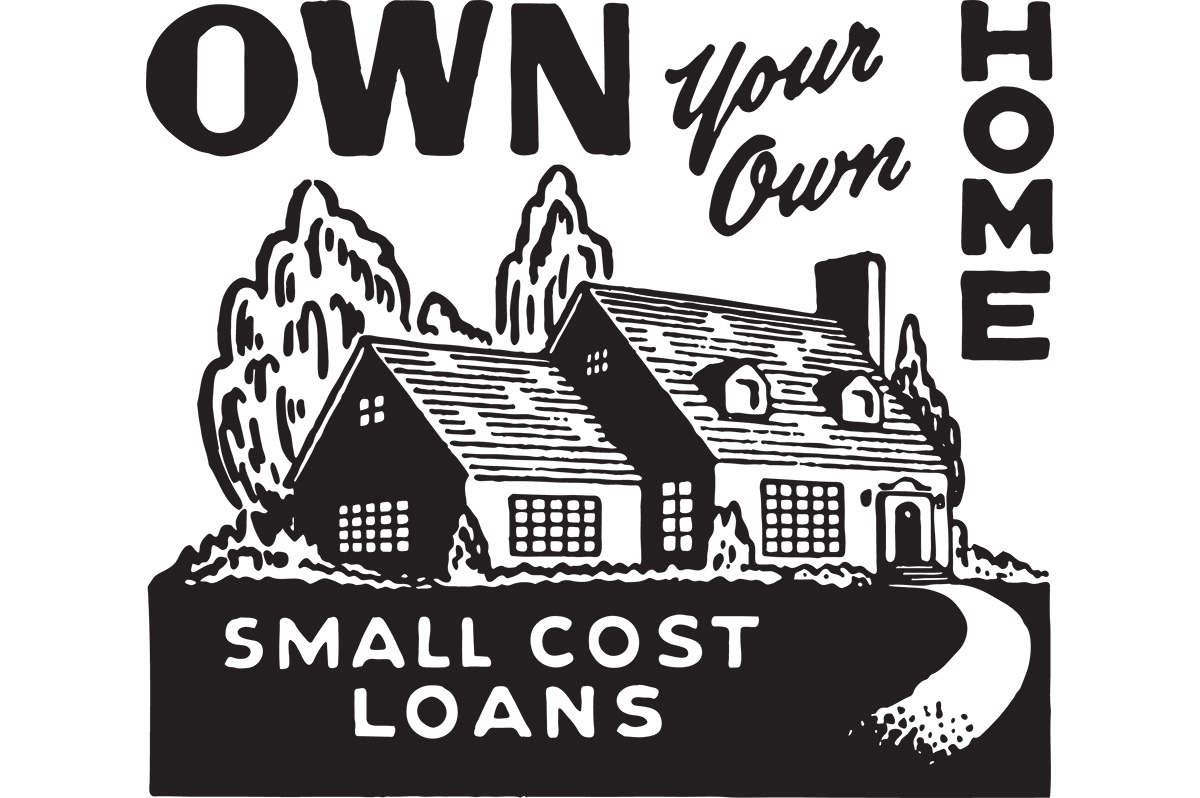
In the 1970s and 1980s, mortgage interest rates climbed into the double digits and peaked above 18%. With rates like that, you needed more than a steady job and a down payment to buy a home — you needed creative financing ideas.
Today’s market challenges may look different, but the response has been surprisingly familiar: unusual financing methods are making a comeback, along with some new ones that didn’t exist decades ago. Here is a brief overview of the most popular tools from that era.
Assumable Mortgages were available with FHA, VA, and USDA loans and, until 1982, even Conventional mortgages. They allowed a buyer to take over the seller’s existing mortgage, including its interest rate, rather than getting a brand-new loan, while compensating the seller for the difference between the assumed loan balance and the contract price.
Often, a seller played a substantial role in a purchase. With Seller Financing (Owner Carry) the seller became the bank, letting the buyer make payments directly to them instead of to a traditional lender.
One variation on Seller Financing was the Land Contract. The seller was still the lender, but the buyer made loan payments to the seller, who then paid his own mortgage and pocketed the difference. The buyer would receive equitable title (the right to use and occupy the property), while the seller kept the title or deed until the contract was paid off or the property sold.
With Wraparound Mortgages, the seller created a new, larger loan for the buyer that “wrapped” around the existing mortgage at an agreed-upon rate. The buyer would then pay the seller, who would continue making mortgage payments on the existing balance, collecting payments and pocketing the spread. Whether title conveyed to the buyer or remained with the seller was negotiated between the parties.
Unlike an assumption, when buying a home Subject To an existing mortgage, the buyer took title to the property and agreed to pay the seller’s mortgage directly to the lender plus any equity to the seller; the mortgage stayed in the seller’s name. Now, most mortgages have a Due on Sale clause that prohibits this kind of transaction without the expressed consent of the lender.
Rent-to-Own was also a popular way to get into a home. While a potential buyer rented a property, the seller would offer an option to purchase for a set amount to be exercised at a later date (lease option) or allow a portion of the rent collected to be considered as a downpayment once accrued (lease purchase).
Graduated Payment Mortgage (GPM) loans were authorized by the banking industry in the mid-1970s and Adjustable Rate Mortgages (ARM) surfaced in the early 1980s. Both featured low initial payments that gradually increased over time.
With the GPM, although lower than market to start, the interest rate was fixed and payment increases were scheduled. A buyer could rely on the payment amount and save accordingly.
ARMs, on the other hand, had interest rates that could change based on the market index, with less predictability and a higher risk of rate shocks, as we saw during the Great Recession from 2007-2009.
While mortgage rates today aren’t anywhere near the extremes of the 1980s, buyers still face a tough environment: higher prices, limited inventory, and stricter lending standards. That combination has pushed people to explore tried and true alternatives and add new ones.
Assumable mortgages and ARMs are on the table again and seller financing is still worth exploring. Just last week, I overheard a colleague asking about a land contract.
Lenders are beginning to use Alternative Credit Evaluation indicators, like rental payment history or bank cash-flow analysis, to assess borrower strength when making mortgage loan decisions.
There are Shared Equity Programs, where companies or nonprofits contribute part of a down payment in exchange for a share of the home’s future appreciation. With Crowdfunding Platforms, investors pool money online to finance real estate purchases or developments.
Another unconventional idea being debated today is the 50-year mortgage, designed to help buyers manage high home prices. Such a mortgage would have a 50-year repayment term, rather than the standard 30 years, lowering monthly payments by stretching them over a longer period.
Supporters argue that a 50-year mortgage could make monthly payments significantly more affordable for first-time buyers who feel priced out of the market. Critics, however, warn that while the monthly payment may be lower, the lifetime interest cost would be much higher.
What ties the past and present together is necessity. As long as affordability remains strained, creative financing – old and new – will continue to shape the way real estate gets bought and sold. As with everything real estate, my question will always be, “What’s next?”
Valerie M. Blake is a licensed Associate Broker in D.C., Maryland, and Virginia with RLAH @properties. Call or text her at 202-246-8602, email her at [email protected] or follow her on Facebook at TheRealst8ofAffairs.
Real Estate
Could lower rates, lagging condo sales lure buyers to the table?
With pandemic behind us, many are making moves
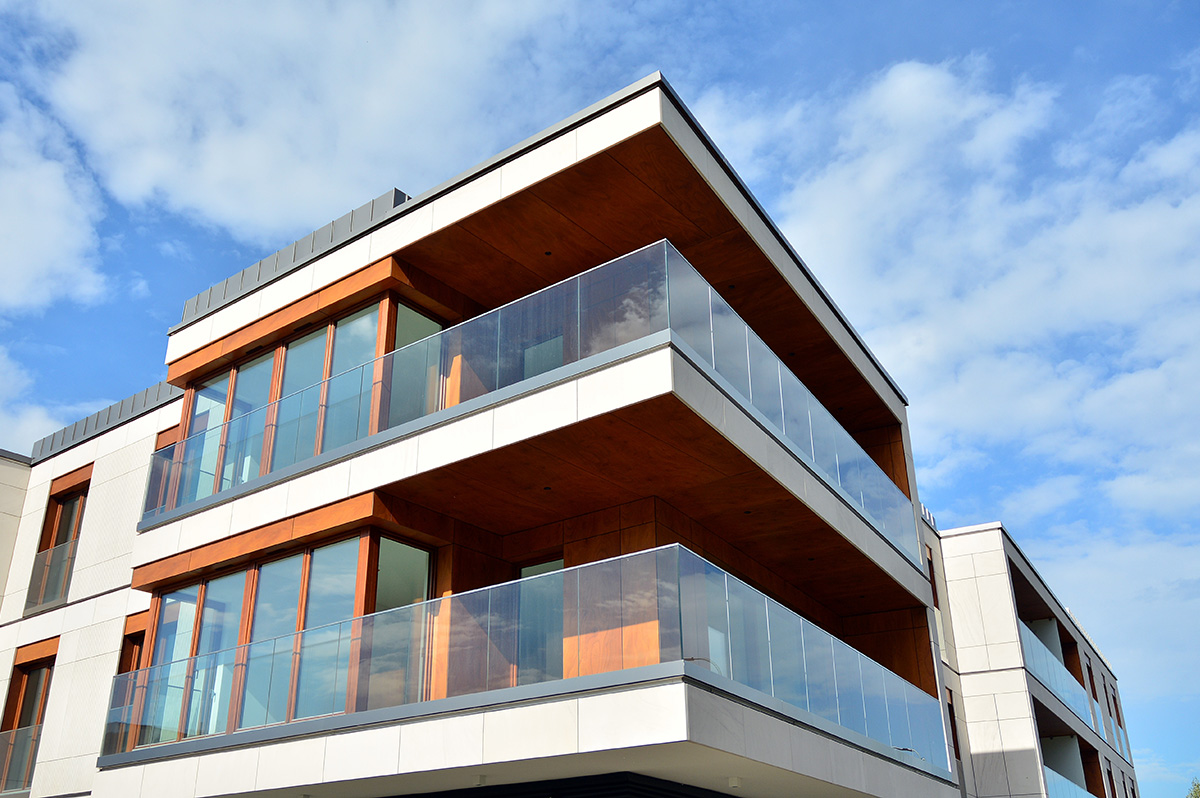
Before the interest rates shot up around 2022, many buyers were making moves due to a sense of confinement, a sudden need to work from home, desire for space of their own, or just a general desire to shake up their lives. In large metro areas like NYC, DC, Boston, Chicago, Miami and other markets where rents could be above $2k-$3k, people did the math and started thinking, “I could take the $30,000 a year I spend in rent and put that in an investment somewhere.”
Then rates went up, people started staying put and decided to nest in the new home where they had just received a near 3% interest rate. For others, the higher rates and inflation meant that dollars were just stretching less than they used to.
Now – it’s been five years since the onset of the pandemic, people who bought four years ago may be feeling the “itch” to move again, and the rates have started dropping down closer to 5% from almost 7% a few years ago.
This could be a good opportunity for first time buyers to get into the market. Rents have not shown much of a downward trend. There may be some condo sellers who are ready to move up into a larger home, or they may be finding that the job they have had for the last several years has “squeezed all the juice out of the fruit” and want to start over in a new city.
Let’s review how renting a home and buying can be very different experiences:
- The monthly payment stays (mostly) the same. P.I.T.I. – Principal, Interest, Taxes and Insurance – those are the four main components of a home payment. The taxes and insurance can change, but not as much or as frequently as a rent payment. These also may depend on where you buy, and how simple or complex a condo building is.
- Condo fees help pay for the amenities in the building, put money in the building’s reserve funds account (an account used for savings for capital improvement projects, maintenance, and upkeep or additions to amenities)
- Condos have restrictions on rental types and usage – AirBnB and may not be an option, and there could be a wait list to rent. Most condo associations and lenders don’t like to see more than 50% of a building rented out to non-owner occupants. Why? Owners tend to take better care of their own building.
- A homeowner needs to keep a short list of available plumbers, electricians, maintenance people, HVAC service providers, painters, etc.
- Condo owners usually attend their condo association meetings or at least read the notices or minutes to keep abreast of planned maintenance in the building, usage of facilities, and rules and regulations.
Moving from renting to homeownership can be well worth the investment of time and energy. After living in a home for five years, a condo owner might decide to sell, and find that when they close out the contract and turn the keys over to the new owner, they have participated in a “forced savings plan” and frequently receive tens of thousands of dollars for their investment that might have otherwise gone into the hands of a landlord.
In addition, condo sellers may offer buyers incentives to purchase their home, if a condo has been sitting on the market for some time. A seller could offer such items as:
- A pre-paid home warranty on the major appliances or systems of the house for the first year or two – that way if something breaks, it might be covered under the warranty.
- Closing cost incentives – some sellers will help a cash strapped buyer with their closing costs. One fun “trick” realtors suggest can be offering above the sales price of the condo, with a credit BACK to the buyer toward their closing costs. *there are caveats to this plan
- Flexible closing dates – some buyers need to wait until a lease is finished.
- A seller may have already had the home “pre-inspected” and leave a copy of the report for the buyer to see, to give them peace of mind that a 3rd party has already looked at the major appliances and systems in the house.
If the idea of perpetual renting is getting old, ask a Realtor or a lender what they can do to help you get into investing your money today. There are lots of ways to invest, but one popular way to do so is to put it where your rent check would normally go. And like any kind of seedling, that investment will grow over time.
Joseph Hudson is a referral agent with Metro Referrals. He can be reached at 703-587-0597 or [email protected].
Real Estate
How federal layoffs, shutdown threaten D.C.-area landlords
When paychecks disappear, the shock doesn’t stop at the Beltway

When federal paychecks disappear, the shock doesn’t stop at the Beltway. It lands on the doorsteps of the region’s property owners, those who rent out their rowhouses in Petworth, condos in Crystal City, and homes stretching into Montgomery and Prince George’s counties. Landlords depend on steady rent from tenants employed by the very institutions that are now downsized or worse, shuttered.
This fall, Washington’s economic identity is being tested once again. Thousands of federal workers who accepted “deferred resignation” packages will soon lose their income altogether. And with a long government shutdown looming, even those still on the payroll face delayed paychecks. For landlords, that combination of uncertainty and sudden income loss threatens to unsettle a rental market already balancing on the edge.
A Test of Resilience
Rosie Allen-Herring, president of United Way of the National Capital Area, recently told The Washington Post, “This region stands to take a hard hit from those who are no longer employed but can’t find new employment and now find themselves in need. It’s a full-circle moment to be a donor and now find yourself in need, but it is very real for this area.” 1 That reversal captures the broader moment: The D.C. economy built on federal paychecks and charitable giving now faces a stress test of compassion and cash flow alike.
For landlords, adaptability will determine who weathers the storm. Those who are able to keep the rent coming in, retain their tenants or find replacement tenants without the same economic hardships are going to be able to get to the other side with manageable financial disruptions. Those who plan, communicate, and stay financially flexible will keep their properties occupied and their reputations intact.
A Region Built on Federal Pay
Roughly one in ten jobs in the Washington metropolitan area is tied directly to the federal government, according to the Bureau of Labor Statistics. That number climbs sharply when you include contractors, nonprofits, and think tanks dependent on federal funding.
This concentration means that when the federal government sneezes, D.C.’s housing market catches a cold. The Brookings Institution recently reported that since January, the region’s unemployment rate has climbed eight times faster than the national average, and local job growth has flattened. 1 More anecdotal, I’ve spoken with property owners this year who are looking to rent out the property they own in DC because they have to move to another region for work.
As The Post observed, “The region has shed federal jobs at a higher rate, and both the number of homes for sale and the share of residents with low credit scores have grown more quickly here than the rest of the country.” 1
For landlords, that’s a flashing warning light. When a certain category of tenants with solid compensation lose reliable government salaries and face dim re-employment prospects, rent becomes harder to collect and rent levels can decline year on year.
The Human Side of a Policy Shock
The people behind these statistics are often long-tenured civil servants. The Post profiled former State Department employee Brian Naranjo, who said he had “unsuccessfully thrown his résumé at more than 50 positions since resigning in May.” “It’s terrible,” Naranjo told the paper. “You have far more people going for those very specialized jobs than would normally be out there.” 1
Another displaced worker, Jennifer Malenab, a 42-year-old former Department of Homeland Security employee, described canceling daycare and family vacations while she scours job boards. “This is not where you want to be at 42, with a family,” she said. 1
When households like these lose steady pay, not only do they pull back on spending, but if they are renters landlords may see a lag in rent receipts, requests for partial payments, or in some cases, a premature notice to vacate. Some tenants will relocate out of the region altogether — a prospect already visible in rising “for sale” listings and increased moving-truck activity in Northern Virginia and suburban Maryland.
What Happens When the Rent Doesn’t Arrive
When rent payments are disrupted, even temporarily, the financial effects can be immediate. Many small landlords depend on rent to cover their mortgages, property taxes, insurance premiums, and routine maintenance. Even a temporary interruption in income can deplete reserves, delay repairs, and strain their ability to meet loan obligations.
Larger multifamily owners are not immune. If multiple tenants in a building lose income at once, cash flow can fall sharply. During the brief 2019 government shutdown, some D.C. landlords offered short-term payment plans to furloughed workers with the expectation of eventual back pay. However, under current conditions, where many positions are being permanently eliminated and paychecks may not be restored, landlords face much greater uncertainty and cannot assume repayment will be guaranteed.
In the District of Columbia, the Rental Housing Commission has advised landlords to continue operating strictly within established legal procedures and to avoid informal or selective payment arrangements that could be interpreted as discriminatory under the D.C. Human Rights Act. Courts in Virginia and Maryland allow temporary continuances when tenants provide documentation of a federal furlough or income disruption, but it is the court, not the landlord, that determines eligibility for relief.
How Landlords Should Proceed
- Continue filing nonpayment cases through normal legal channels rather than delaying action.
- Allow the courts to apply any continuance or relief provisions if a tenant qualifies due to federal employment status or income interruption.
- Avoid making selective accommodations based on a tenant’s job type or federal employment status, as this may violate equal-treatment and source-of-income protections.
Landlords with a single tenant or a consistent written policy of offering payment plans to all tenants experiencing verified income disruption should not be at risk of discriminatory treatment.
Vacancy, Concessions, and Shifting Demand
Beyond nonpayment of rent, landlords face a challenge from a different direction: weak demand. As fewer jobs are being created and unemployed or under-employed tenants move out of DC, the supply of available rental units will rise, forcing landlords to compete more aggressively on price and amenities.
Market data already point that direction. The volume of rental listings across the District of Columbia jumped roughly 14 percent year-over-year in September, according to the realtor Multiple Listing Service (MLS) trends, as reported by the Washington Business Journal. Landlords are offering free parking, one-month concessions, or flexible leases to retain quality tenants.
Neighborhoods once buffered by federal stability like Silver Spring, Falls Church, and Alexandria may now see higher tenant turnover. As one Arlington property manager put it, “We used to say federal employees were the safest tenants in America. Now we’re rewriting that rule.”
A Shrinking Workforce, a Softer Market
In addition to the layoffs, the region is contending with a broader identity crisis. “Yesim Sayin, executive director of the D.C. Policy Center, put it bluntly: ‘Beyond federal employment, we relied on tourism. But foreign tourists aren’t coming. And we relied a whole lot on universities bringing talent who would then stay here and be part of our talent pool. And that is kind of gone, too. So what are we now? We just don’t know.’” 1
This uncertainty may impact property values and investor sentiment. When employers relocate, renters follow. If enough mid-career professionals leave, demand for rentals will first soften and then we’ll begin to see a lowering of the average rents a landlord can command for their rental. We have already seen this in the current rental market. Rents that seems reasonable a few years ago, are now being discounted by hundreds of dollars. Landlords who are searching for new renters after several years of having tenants are finding that they need to bring rent levels below where they used to be to secure tenants commitments.
Strategies for Landlords: Staying Solvent and Supportive
In times like these, survival depends on both prudence and empathy.
1. Communicate early. Encourage tenants to disclose financial hardship before missing payments. Written payment plans, properly documented, can forestall eviction while preserving goodwill.
2. Review legal protections. Understand D.C., Maryland, and Virginia rules regarding furlough continuances or income-source discrimination. Seek legal counsel before altering lease terms mid-cycle.
3. Build reserves and credit access. Line up a home-equity or business line of credit to bridge shortfalls. Cash on hand always is helpful to have as a buffer for the impact of income disruption.
4. Monitor policy developments. State and local governments are supporting people who are affected by the lay-offs. Landlords can benefit indirectly through their renters who are utilizing these programs to assist them in paying their monthly expenses.
5. Contact your Congressional representatives to demand the reopening of the federal government. And in D.C., you do benefit from representation, even though they cannot vote. They can influence decisions that matter.
Scott Bloom is owner and senior property manager of Columbia Property Management.
-

 The White House5 days ago
The White House5 days agoTrans workers take White House to court over bathroom policy
-

 Opinions5 days ago
Opinions5 days agoEverything is Everything
-

 Federal Government5 days ago
Federal Government5 days agoHHS ‘peer-reviewed’ report calls gender-affirming care for trans youth dangerous
-

 Congress4 days ago
Congress4 days agoMTG resigns after years of anti-LGBTQ attacks amid Trump feud














